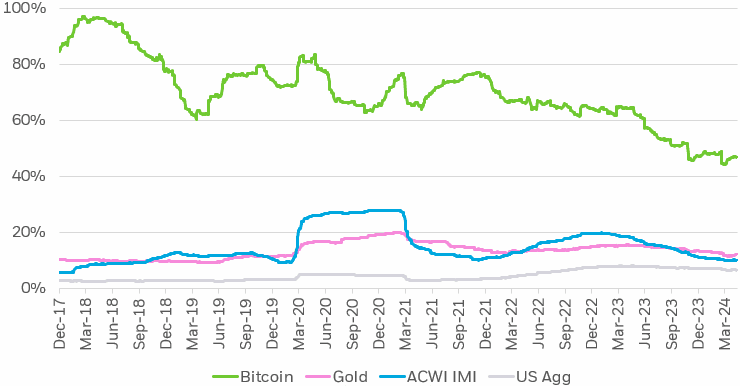Introduction to Bitcoin Mining
Bitcoin mining is a crucial aspect of the Bitcoin network, enabling transactions to be verified and added to the blockchain. The Bitcoin mining process involves solving complex mathematical problems, which not only secures the network but also introduces new bitcoins into circulation. This process is essential for maintaining the integrity and functionality of the Bitcoin ecosystem.
As more individuals engage in Bitcoin mining, understanding how it works becomes increasingly important. The mining process requires specialized hardware and software, as well as access to significant computational power. In this section, we will delve into the intricacies of Bitcoin mining, providing a solid foundation for comprehending its operations and implications.
The Process of Bitcoin Mining
The Bitcoin mining process begins with miners competing to solve cryptographic puzzles. These puzzles are generated by the Bitcoin network and require substantial computational resources to solve. Once a miner successfully solves a puzzle, they create a new block, which is then added to the blockchain. This entire process is known as proof-of-work.
After a block is created, it is broadcast to the network for validation. Other miners verify the block’s authenticity by checking the solution to the cryptographic puzzle and ensuring that the transactions within the block are valid. Once validated, the block is added to the blockchain, and the miner is rewarded with newly minted bitcoins, along with transaction fees from the included transactions.
The mining process is energy-intensive and requires significant investment in hardware. Miners often use Application-Specific Integrated Circuits (ASICs) due to their efficiency in performing the necessary calculations. Additionally, miners may choose to join mining pools to increase their chances of earning rewards by combining their computational power with others.
Mining Hardware Options
Choosing the right hardware is critical for efficient Bitcoin mining. Several options are available, each with its advantages and disadvantages. ASIC miners are the most popular choice among serious miners due to their high performance and energy efficiency. These devices are specifically designed for Bitcoin mining and can deliver impressive hash rates.
Another option is GPU mining, which utilizes graphics processing units. While not as efficient as ASICs for Bitcoin, GPUs can be beneficial for mining other cryptocurrencies. However, the cost-effectiveness of GPU mining has diminished as ASICs have become the standard for Bitcoin.
When selecting mining hardware, consider factors such as:
- Hash rate: The speed at which a miner can solve cryptographic puzzles.
- Energy consumption: The amount of electricity required to operate the hardware.
- Cost: The initial investment needed to purchase the hardware.
- Cooling requirements: Effective cooling solutions are necessary to prevent hardware damage.
In conclusion, understanding the Bitcoin mining process and the hardware options available is essential for anyone interested in participating in the Bitcoin ecosystem. By grasping the fundamentals, miners can make informed decisions that enhance their mining efficiency and profitability.
Bitcoin Mining Profitability Analysis
Bitcoin mining profitability is a critical consideration for miners looking to enter or continue in this competitive space. Understanding the factors influencing profitability can help miners make informed decisions about their operations. Key elements include mining rewards, electricity costs, and hardware efficiency.
The primary revenue source for Bitcoin miners is the block reward, which is currently set at 6.25 bitcoins per block. This reward is halved approximately every four years, affecting potential earnings. Miners also earn transaction fees from the transactions included in the blocks they mine, which can vary based on network activity.
Electricity costs are often the largest operational expense for miners. It is crucial to evaluate energy rates in your region and consider locations with lower costs to maximize profitability. Additionally, hardware efficiency plays a significant role. Miners should invest in high-performance ASIC miners that offer better hash rates per watt of energy consumed.
Profitability calculators can assist miners in estimating their potential earnings based on factors such as:
- Hash rate of the mining hardware
- Electricity consumption and rates
- Current Bitcoin price
- Mining pool fees
Regularly monitoring these factors allows miners to adjust their strategies accordingly. While Bitcoin mining can be lucrative, it is essential to stay informed about market trends and changes in the mining ecosystem to maintain profitability.
Energy Consumption and Environmental Impact
The energy consumption associated with Bitcoin mining has raised concerns regarding its environmental impact. Bitcoin mining relies heavily on electricity to power the specialized hardware used in the process. This has led to significant energy usage, which has implications for both the environment and the sustainability of mining operations.
Estimates suggest that Bitcoin mining consumes around 0.5% of the global electricity supply. The environmental impact largely depends on the energy sources used. For instance, mining operations powered by renewable energy have a lower carbon footprint compared to those relying on fossil fuels. Miners are increasingly seeking sustainable energy solutions to mitigate their environmental impact.
In response to growing concerns, some mining facilities are exploring the use of renewable energy sources such as solar, wind, and hydroelectric power. This shift not only helps reduce carbon emissions but can also lead to cost savings in the long run. Miners should consider the following strategies to minimize their environmental impact:
- Utilizing renewable energy sources
- Implementing energy-efficient mining hardware
- Participating in carbon offset programs
By adopting these practices, miners can contribute to a more sustainable future for Bitcoin mining while enhancing their operational efficiency.
Mining Pools and Solo Mining Comparison
When engaging in Bitcoin mining, miners face a crucial decision: whether to mine solo or join a mining pool. Each approach has its advantages and disadvantages, impacting profitability and success rates. Understanding these differences can help miners choose the best option for their specific circumstances.
Solo mining involves an individual miner working independently to solve blocks. While this can lead to higher rewards if successful, the chances of solving a block on one’s own are significantly lower, especially given the increasing difficulty of mining. Solo miners require substantial computational power and resources, making this option less feasible for most individuals.
In contrast, mining pools allow miners to collaborate and combine their computational power. By joining a pool, miners increase their chances of solving blocks and earning rewards more consistently. The rewards earned are then distributed among pool members based on their contributed hashing power. This collaborative approach can lead to a more stable income stream.
Factors to consider when deciding between solo mining and mining pools include:
- Hashing power: Solo miners need significant resources, while pools distribute tasks.
- Reward distribution: Pools provide smaller, more frequent payouts.
- Fees: Pools typically charge fees for their services, affecting overall profitability.
Ultimately, the choice between solo mining and joining a mining pool depends on individual goals, resources, and risk tolerance. Each option offers unique benefits that can align with a miner’s strategy and financial objectives.
Future of Bitcoin Mining
The future of Bitcoin mining is shaped by technological advancements, regulatory developments, and environmental considerations. As the Bitcoin network evolves, miners must adapt to maintain profitability and efficiency. One key trend is the increasing use of renewable energy sources. Many mining operations are transitioning to solar, wind, and hydroelectric power to reduce their carbon footprint and operational costs.
Technological innovations, such as more efficient mining hardware and improved algorithms, are also expected to play a significant role. Enhanced ASIC miners are continually being developed, offering higher hash rates and lower energy consumption. These advancements can make mining more accessible to a broader range of individuals, increasing competition in the market.
Regulatory changes will also influence the future landscape of Bitcoin mining. Governments around the world are beginning to establish frameworks for cryptocurrency operations, which could either promote or hinder mining activities. Miners must stay informed about these regulations to ensure compliance and make strategic decisions regarding their operations.
In summary, the future of Bitcoin mining holds promise, driven by renewable energy, technological progress, and evolving regulations. Miners should remain proactive in adapting to these changes to thrive in the competitive environment.
Risks and Challenges in Bitcoin Mining
Bitcoin mining presents several risks and challenges that miners must navigate to ensure their success. One significant challenge is the volatility of Bitcoin’s price. Fluctuations in value can drastically impact profitability, making it essential for miners to monitor market trends closely.
Another risk is the increasing difficulty of mining. As more miners join the network, the computational power required to solve blocks rises, leading to reduced returns for existing miners. This constant competition necessitates continuous investment in upgraded hardware and software to remain competitive.
Energy costs represent a critical challenge as well. With electricity being a major expense, fluctuations in energy prices can directly affect profit margins. Miners must evaluate their energy sources and consider strategies to minimize costs, such as relocating to areas with lower electricity rates.
Additionally, regulatory uncertainties pose risks to miners. Changes in laws and regulations can impact operations, sometimes forcing miners to shut down or relocate. It is crucial for miners to stay informed about the regulatory landscape in their jurisdictions.
To mitigate these risks, miners should adopt a comprehensive risk management strategy that includes market analysis, efficient hardware use, energy cost assessments, and regulatory compliance. By proactively addressing these challenges, miners can position themselves for long-term success.
Conclusion and Recommendations
In conclusion, understanding the Bitcoin mining process is essential for anyone looking to participate in this dynamic field. The profitability of Bitcoin mining hinges on several factors, including mining rewards, energy costs, and hardware efficiency. As the landscape continues to evolve, miners must adapt to technological advancements, regulatory changes, and environmental considerations.
To maximize success in Bitcoin mining, consider the following recommendations:
- Invest in efficient mining hardware to enhance performance and reduce energy consumption.
- Explore renewable energy options to minimize costs and environmental impact.
- Join mining pools to increase the likelihood of consistent earnings.
- Stay informed about market trends and regulatory developments to make strategic decisions.
- Implement risk management strategies to navigate the challenges of volatility and competition.
By following these guidelines, miners can position themselves effectively within the Bitcoin mining ecosystem, ensuring profitability and sustainability in the long run.





